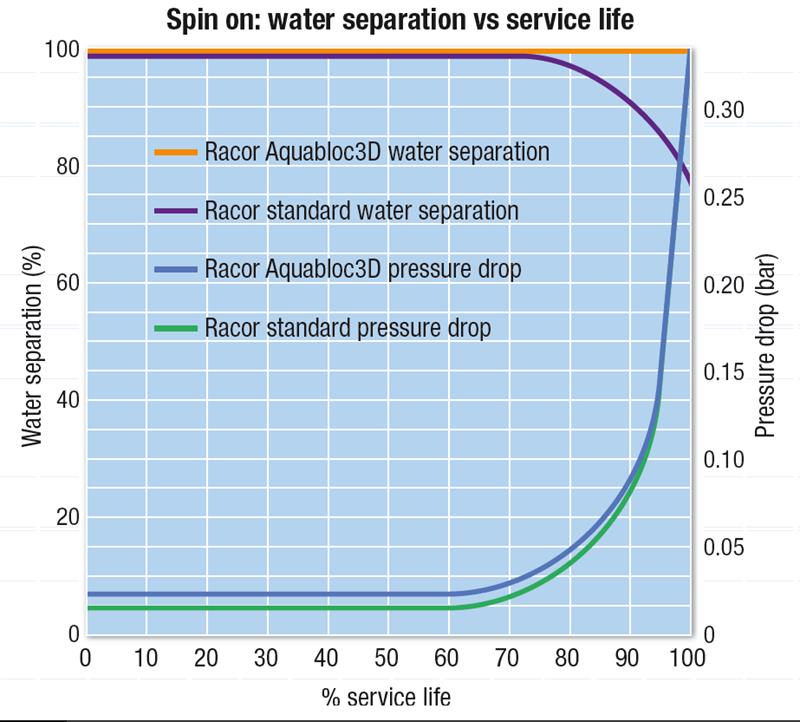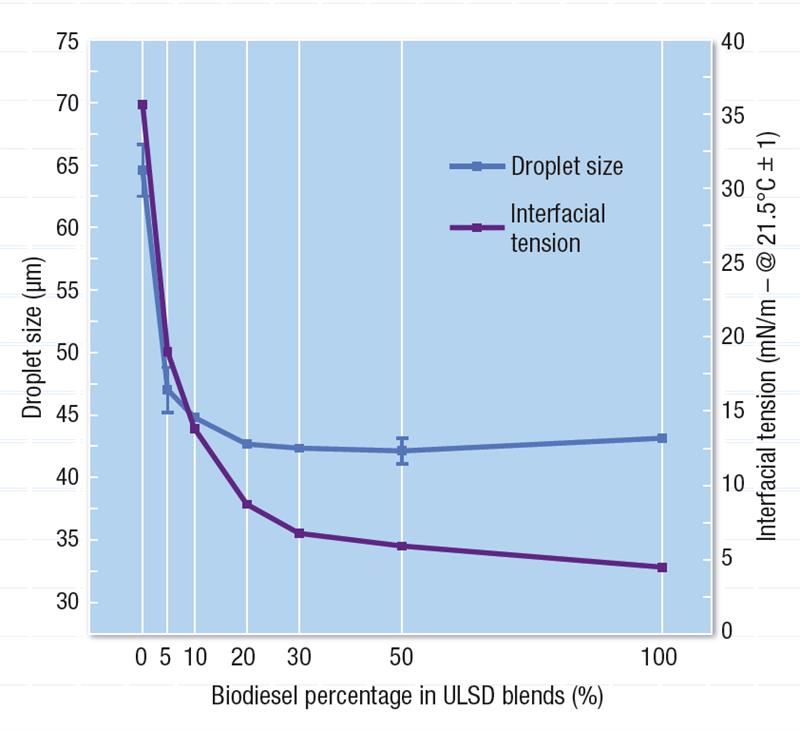That standard, part of ISO 4406:1999, stipulates that, for example, there are no more than 2,500 four-micron particles per ml of fuel (among other requirements; see also www.is.gd/cigudo). But in practice, no UK brand delivers that standard everywhere, all of the time; not to speak of the variance in practice for operators stocking their own bowsers. In either case, a dirty tank, broken ventilation pump, low throughput or a hidden corrosion problem could all turn fuel into orange juice – with bits.
Engines from 20 years ago might have been more forgiving of contaminants than those of today, according to Adam Pearce, Parker Racor product manager for fuel filtration. Over that period, the EN590 diesel standard has not changed much; nor has customer demand for a regular-sized fuel filter at a standard price that will operate for 60,000mi. But in two decades, engines have jumped three Euro emission stages, as well as been re-engineered for greater fuel efficiency, partly through raising injection pressures to increase its accuracy. To provide fuel that is clean enough to protect the injectors from damage, the filter’s efficiency performance has had to be upgraded massively, while maintaining service life and other requirements.
The filter itself does not indicate when it is clogged; instead, most trucks’ fuel lines are fitted with sensors that measure fuel pressure before, and sometimes after, the filter. The greater the imbalance between the two, the more likely an alarm will trip (see also graph below). More-frequent-than-expected replacement of fuel filters is a sign that something is going wrong and that the fuel supply chain needs examination, Pearce states.

Here are Parker Racor’s tips for improving fleet fuel quality. First, match the size of the tank to the fleet, so that stocks are replenished frequently. Pearce argues that, irrespective of quantity, diesel should not be stored for more than a couple of months, as the 7% biodiesel fraction that is made from vegetable oil will start to degrade, going misty and attracting water. At high enough biodiesel concentrations, water can get past the barrier pre-filter water separator and into the engine, corroding internal valve and injector surfaces. Also, as biodiesel ages, it becomes more acidic, and can corrode ferrous tanks.
Second, take care with tank ventilation systems. Water also forms on the interior surfaces of tanks that are ventilated with atmospheric air, as condensation. Tank breathers dry, to a degree, incoming air with absorbent material. Another risk from ventilation is biological contamination; as tanks empty, the vacuum caused by the displacement of the liquid tends to suck in air. If that air is unfiltered, and particularly dusty, it might bring in bacteria that will grow into sludge, particularly in the presence of water. Difficult to remove from a tank without biocidal treatment, the sludge is also good at clogging fuel filters.

Third, consider an annual tank purge. This is what commercial suppliers do as a minimum, since they deal with large quantities of fuel, and because their business relies on the quality of their product. They employ third-party specialists to probe conditions at the bottom of the tank, then pump the entire supply through umbilical tubes connected to a couple of pre-filters and a finer filter. Or they may dose the fuel with additives. Some circumstances may even call for permanent fuel polishing systems that extend the operational life of the fuel – they are often fitted to fuel storage tanks for emergency back-up generators, for example. Even they, for the most part, don’t bother with the expense of real-time tank monitoring, since the cost outweighs the risk.
Fourth, beware of national differences in the fuel mix. Like many European countries, UK suppliers tend to add detergents to diesel in an attempt to stop varnishing and tarnishing on internal engine surfaces, particularly at high temperatures. Because these additives tend to disarm water separating filters, so-called de-emulsifiers can be added to enable the water to be filtered out again. That makes the UK formulation ‘relatively okay’ for modern water separator barrier filters, even with 7% biodiesel, the product manager points out. However, other countries – in particular, France – tend not to add in the de-emulsifiers, opting instead to keep the water in the fuel so that water doesn’t drop out and collect in places. That mix makes it more difficult to control water levels in fuel. Not that there’s much that UK hauliers running low in the Loire valley can do about it, he admits.
Fifth, take extra care with biodiesel. Most commercial vehicles will accept 30% mixes of biodiesel (B30) without modification. But the biodiesel fatty acid methyl ester is a completely different chemical from the fossil hydrocarbon diesel; it just happens to burn quite well in a diesel engine. Biodiesel chemical end groups tend to attract water, rather than repel it as fossil diesel does. That tends to overcome the resistance of the water separator, “like putting alcohol on a Gore-Tex raincoat”, Pearce explains; both tend to allow water to pass through what should be an impermeable barrier. He adds that the company is now offering an alternative water separator technology to the commercial vehicle market.
BOX: ANOTHER WAY TO DRY FUELThe standard water separator consists of a barrier medium made of special paper, through which the fuel flows. On the dirty side, water coalesces, eventually forming droplets that fall into a bowl or draining area. In fuel with particularly high biodiesel content, water behaves differently at the barrier; the droplets that form are weak, and tend to break up, and start to go through the filter media.
However, another filtration technology currently used on aviation fuels can overcome this problem. Rather than including a barrier, the multiple-stage filter in the Aquabloc3D coalescer includes a layer of material that attracts water avidly, stripping it out of the flow stream. It has been found to work much better in high biodiesel fuel fractions, according to the company. And they can be made to fit trucks.
Two particular technical challenges have been overcome in adapting this for use in commercial vehicles: operating with the same pressure drop as a current barrier filter, and providing the same dirt-loading capacity as a standard barrier filter.
FURTHER INFORMATION
Parker Racor Aquabloc3D www.is.gd/nebifa
Parker Racor aftermarket www.is.gd/xibamo